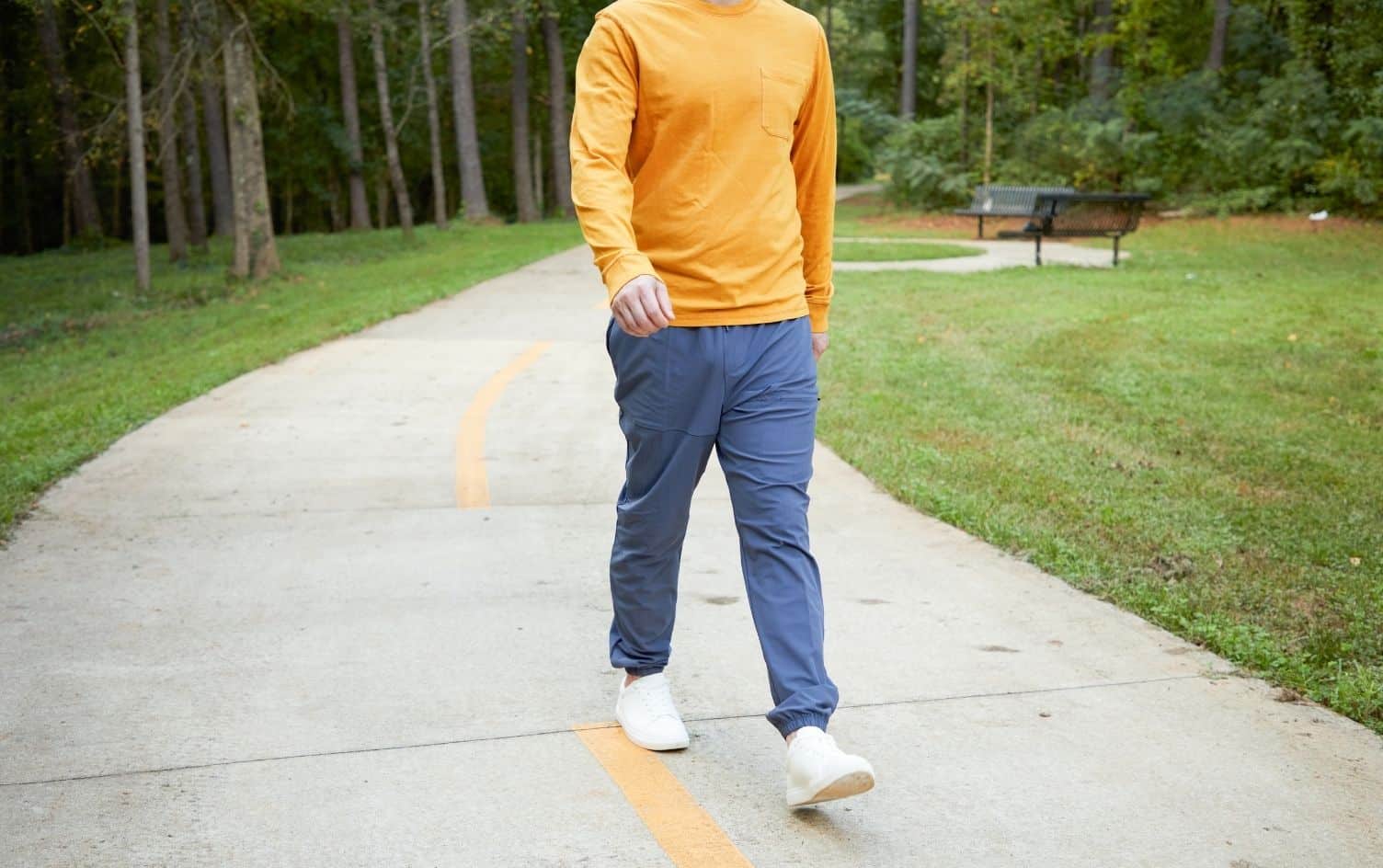To lose fat, you need to burn more calories in a day than you eat (also known as creating a caloric deficit) — and you have to do this over and over again. If you do this long enough, your body will use existing fat stores for energy. The result? Fat-loss.
You can create a caloric deficit by making dietary changes, but exercise can also help. In fact, exercise may even amplify your results: In one study, overweight and obese women who followed a diet and exercise program for one year lost more weight than women who followed a diet-only program (10.8% versus 8.5%).
If you’re thinking of adding exercise to your fat-loss plan, you might consider starting with the easiest option: “Arguably, the easiest type of exercise to lose fat is brisk walking,” says Shelley Keating, PhD, a researcher at the School of Human Movement and Nutrition Sciences at The University of Queensland, Australia. A 15-year study published in the 2009 issue of The American Journal of Clinical Nutrition found walking was associated with less weight gained over time. In other words, walking regularly may help you maintain — or even lose — weight over the long-term.
Regular cardio exercise like walking can also lower levels of abdominal and organ fat, which play a key role in the development of chronic diseases like diabetes, high blood pressure and obesity, “even though you may not see a change on the scale,” Keating says. A 2015 study in the Journal of Hepatology, for example, found regular aerobic exercise improved liver fat by 18–29% in overweight and obese people — regardless of exercise intensity.
TRY BRISK WALKING
Thankfully, walking is a pretty straightforward activity. “It is the fundamental form of locomotion for a human being,” Keating says. “It can be done in almost any environment and with minimal equipment.”
Walking at any pace offers benefits, but walking at a brisk pace may offer even greater fat-loss benefits. Consider these estimates from Harvard Medical School: A 155-pound person who walks for 30 minutes at a pace of 3.5 mph burns roughly 149 calories, but if that same person bumps up the pace to 4 mph, he/she burns roughly 167 calories in 30 minutes.
So, what qualifies as “brisk walking”? According to the Centers for Disease Control and Prevention (CDC), walking at a pace of at least 2.5 mph is considered brisk walking, and falls under the category of moderate-intensity exercise.
However, as walking at a pace of 2.5 mph will feel more or less intense depending on your height, weight, fitness level, as well as the terrain (i.e., hilly or uneven terrain makes your walk feel more intense than flat or even terrain), it might be better to gauge your intensity on a scale of 0–10. On this scale, 0 corresponds to sitting, while 10 corresponds to the highest level of effort possible. According to the CDC, moderate-intensity activities — like brisk walking — feel like a 5 or 6.
If you’re not sure where to start, try following these recommendations from the CDC: Aim to get at least 2 1/2 hours of moderate-intensity cardio (i.e., brisk walking) every week. For even greater health benefits (e.g., reduced risk of heart disease, Type 2 diabetes and fat gain), double these recommendations.
Be sure to pair your walking routine with a healthy diet. While exercise can help you create a caloric deficit — through the calories burned both during and after the workout — your diet is critical. “The key for fat loss is how much energy you expend with each exercise session, and how many calories you’re consuming via your diet,” Keating says. A registered dietitian may help.
If you’re new to exercise or have a chronic condition, Keating recommends getting help from a fitness professional, like an exercise physiologist.
OTHER REASONS TO WALK
Fat-loss is only one reason to add walking to your routine. “Exercise is one of the most important things you can do for good health,” Keating says.
For one thing, regular exercise like brisk walking can improve your cardiorespiratory fitness. “Cardiorespiratory fitness is so important for health and longevity that leading physicians in the U.S. have called for it to be measured in routine check-ups as a vital sign,” Keating says. According to a statement from the American Heart Association, having low cardiorespiratory fitness is associated with a high risk of heart disease, death from any cause and death from various cancers. What’s more, even small improvements in cardiorespiratory fitness can lead to considerably lower rates (10–30%) of heart attacks, strokes and other adverse cardiovascular events.
Research in The Primary Care Companion also reveals cardio exercise like walking can reduce anxiety and depression and improve self-esteem and mental function.
Originally published January 2020
Ready to take the next step? Unlock MyFitnessPal Premium to access custom goal settings, quick-log recipes, and guided plans from a registered dietitian. Premium users are 65% more likely to reach their weight loss goals!




